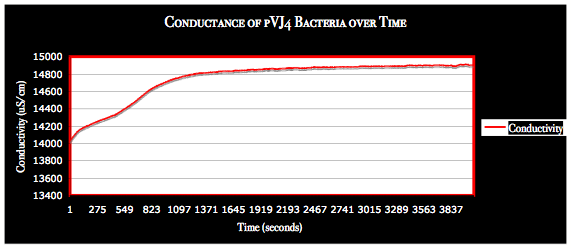Team:Brown/Project/Analysis
From 2008.igem.org
(Difference between revisions)
| Line 50: | Line 50: | ||
| + | ==NaCl Testing== | ||
| + | * Multiple "Salt Tests" were performed to determine the exact sensitivity of our apparatus. | ||
==Resistance Testing== | ==Resistance Testing== | ||
* This test was done with 50X concentrated pVJ4 E. coli bacteria resuspended in M9 Minimal Media. Cultures were left overnight. | * This test was done with 50X concentrated pVJ4 E. coli bacteria resuspended in M9 Minimal Media. Cultures were left overnight. | ||
Revision as of 05:51, 29 October 2008
Optical Density
Each culture was originally grown into the stationary phase and then diluted to the mid-log phase. The E. coli cells experience greatest growth in the Mid-Log phase. Arabinose was added while cells were in this phase which provided the quickest protein expression and resulting lysis.
NaCl Testing
Resistance Testing
Conductivity Testing
|
 "
"


